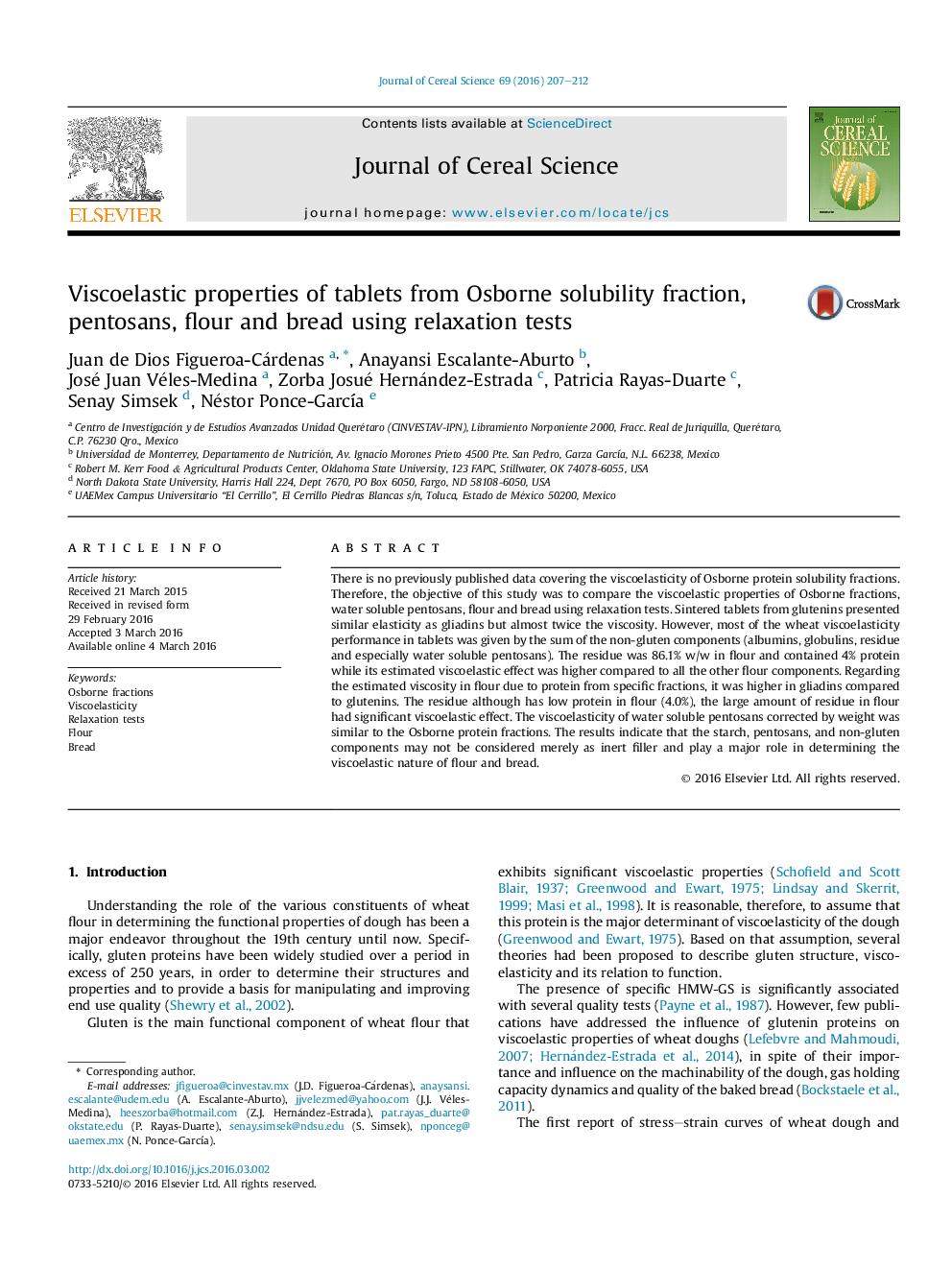| Article ID | Journal | Published Year | Pages | File Type |
|---|---|---|---|---|
| 4515585 | Journal of Cereal Science | 2016 | 6 Pages |
•There is no published data covering the viscoelasticity of Osborne fractions.•Glutenins and gliadins had similar elasticity but glutenins had twice the viscosity.•Residue seems to be the predominant factor affecting the viscoelasticity in flour.•Starch, pentosans, and non-gluten may not be considered as inert fillers of bread.•Non-gluten components play major role in viscoelasticity of flour, dough and bread.
There is no previously published data covering the viscoelasticity of Osborne protein solubility fractions. Therefore, the objective of this study was to compare the viscoelastic properties of Osborne fractions, water soluble pentosans, flour and bread using relaxation tests. Sintered tablets from glutenins presented similar elasticity as gliadins but almost twice the viscosity. However, most of the wheat viscoelasticity performance in tablets was given by the sum of the non-gluten components (albumins, globulins, residue and especially water soluble pentosans). The residue was 86.1% w/w in flour and contained 4% protein while its estimated viscoelastic effect was higher compared to all the other flour components. Regarding the estimated viscosity in flour due to protein from specific fractions, it was higher in gliadins compared to glutenins. The residue although has low protein in flour (4.0%), the large amount of residue in flour had significant viscoelastic effect. The viscoelasticity of water soluble pentosans corrected by weight was similar to the Osborne protein fractions. The results indicate that the starch, pentosans, and non-gluten components may not be considered merely as inert filler and play a major role in determining the viscoelastic nature of flour and bread.
